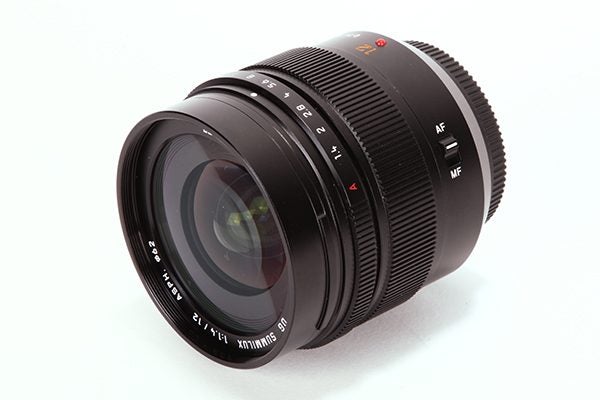Andy Westlake gets his hands on a premium fast wideangle prime for Micro Four Thirds
Panasonic Leica DG Summilux 12mm f/1.4 Asph review
Panasonic Leica DG Summilux 12mm f/1.4 Asph review – Image quality
Of course, when you’re paying top dollar for a lens, you want it to give sharp, high-quality images. Well, have no fear, because the Summilux 12mm f/1.4 does just that. Wide open, it captures plenty of fine detail, especially in the middle of the frame. Indeed, viewing images close-up on-screen reveals that images shot at f/1.4 are barely distinguishable from those taken at f/2.8 or f/5.6 in respect of central sharpness. Stopping down further brings visible diffraction softening, and personally I’d avoid venturing beyond f/8 – but that’s absolutely normal for the Four Thirds sensor format.
In normal use, distortion is invisible owing to Panasonic’s adoption of modern lens design principles that integrate software corrections into the imaging chain. Likewise, lateral chromatic aberrations are effectively suppressed when the lens is used on Panasonic cameras or newer Olympus bodies. However, a little green and magenta colour fringing can be seen towards the corners of the frame with older Olympus models, including the original OM-D E-M5, but it’s far from problematic. Longitudinal chromatic aberration can be more of a problem, with some green fringing visible in out-of-focus backgrounds and magenta fringing in foregrounds; this tends to be most obvious at close focus distances.
Flare is rarely a problem, with the lens handling bright light sources relatively elegantly. Even when the sun is placed directly within the frame, any loss of contrast is localised to the surrounding area. As usual, stopping down gives more defined, less diffuse flare patterns.

Flare is reasonably well controlled with the nine-bladed aperture creating 18-point star patterns around bright light sources
With its f/1.4 aperture, the Summilux can give some decently blurred backgrounds, although the subject will need to be very close to the camera for this to be really effective. Also, because it’s a wideangle lens, a careful choice of camera angle will be necessary to avoid overly fussy, distracting backgrounds. However, the aesthetic quality of the blur it creates can actually be rather attractive.






